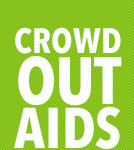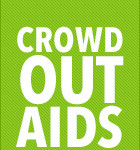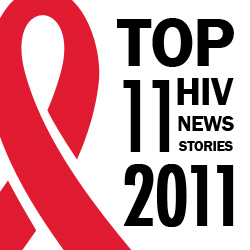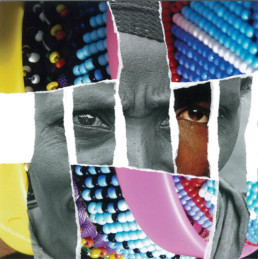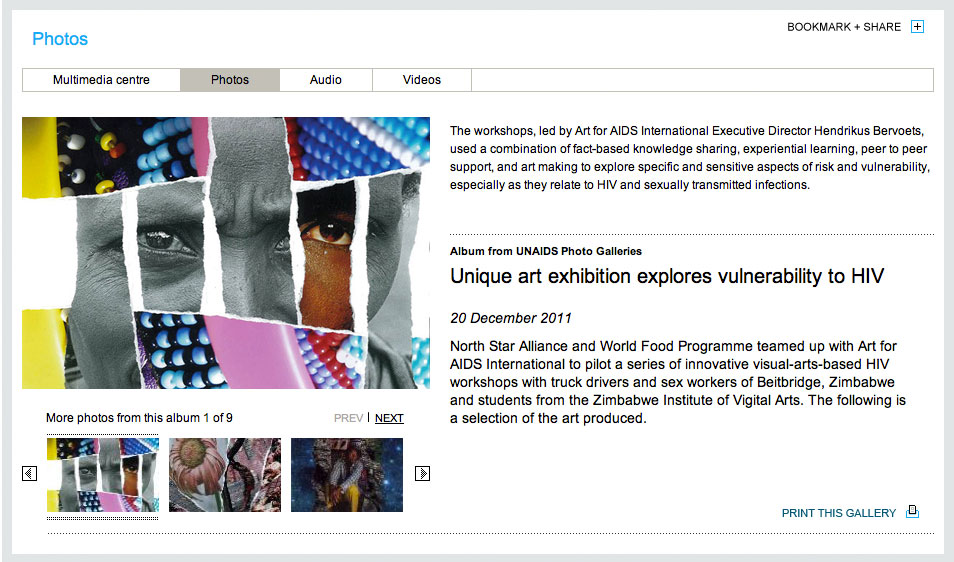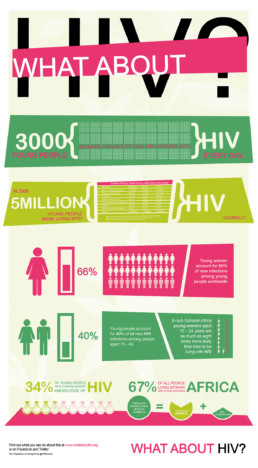CrowdOutAIDS: A new youth-driven, youth-focused HIV strategy
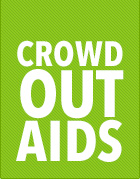 In 2011, the Joint United Nations Programme on HIV/AIDS (UNAIDS) challenged young people from around the world to collaborate and crowdsource the next global HIV strategy. Today, after five months of collaborative efforts, youth leaders from around the world met in Abuju Nigeria to present CrowdOutAIDS to UNAIDS Executive Director Michel Sidibé; a new strategy produced by more than 5000 young people from 79 countries that will guide the UNAIDS Secretariat’s work on HIV and young people through 2015.
In 2011, the Joint United Nations Programme on HIV/AIDS (UNAIDS) challenged young people from around the world to collaborate and crowdsource the next global HIV strategy. Today, after five months of collaborative efforts, youth leaders from around the world met in Abuju Nigeria to present CrowdOutAIDS to UNAIDS Executive Director Michel Sidibé; a new strategy produced by more than 5000 young people from 79 countries that will guide the UNAIDS Secretariat’s work on HIV and young people through 2015.
Leveraging social media and new crowdsourcing technology enabled young people to shape the future of the global response to AIDS, a first in United Nations history. “It brought decision-making to the grassroots, to the skilled and unskilled, learned and unlearned, rich and poor, to contribute to an issue that affects all our lives: HIV," said Nigerian activist Gabriel Adeyemo.
“I am so impressed by the dedication, energy and enthusiasm that young people have shown through the CrowdOutAIDS initiative,” said Mr Sidibé. “The recommendations they have presented to UNAIDS will help us mobilize a new generation of young leaders and we will work together to stop new HIV infections and AIDS-related deaths.”
Globally, its estimated that five million young people (15-24 years of age) are living with HIV. About 3000 young people are newly infected with HIV each day. According to recent surveys in low- and middle-income countries, only 24% of young women and 36% of young men responded correctly when asked questions on HIV prevention and transmission.
Through CrowdOutAIDS, young people proposed six key recommendations for the UNAIDS Secretariat:
- Strengthen young people’s skills for effective leadership at all levels of the AIDS response;
- Ensure the full participation of youth in the AIDS response at country, regional, and global levels;
- Improve young people’s access to HIV-related information;
- Diversify and strengthen strategic networks between the UNAIDS Secretariat, youth networks, and other key players;
- Increase the UNAIDS Secretariat’s outreach to both formal and informal networks of young people; and,
- Increase young people’s access to financial support.
“We have worked together, using the simplest tools—each one of us in their own corner of the world—to create spaces of exchange and draft this important document in real-time, public online sessions,” said Zahra Benyahia, a CrowdOutAIDS drafting committee member. “This is not the end. It’s the first step toward revolutionary youth leadership in the AIDS response.”
For more details on CrowdOutAIDS visit http://www.crowdoutaids.org/ or check out UNAIDS' Press Release
Photo Source: CrowdOutAIDS
AIDS in 2011: A Year in Review
2011 was a mixed bag in the global response to AIDS. While exciting medical breakthroughs in treatment and prevention hint at tremendous potential to reduce the transmission of HIV, these were often offset by reduced financial investment, profiteering, and discriminatory national policies. As we enter the 4th decade of HIV, we wanted to take a look back at some of the biggest stories that defined the AIDS response in 2011.
11 Major Stories from 2011
AIDS turns 30

30 years ago, the United States Centers for Disease Control and Prevention (CDC) issued a report outlining five cases of what was believed to be a rare form of pneumonia. In retrospect, this report would be the first official one to outline what is now recognized widely as the HIV epidemic.
Read our special feature on 30 Years of HIV.
ARVs Prevent Infection

On May 12, the results of the HPTN 052 trial indicated that if an HIV-positive person adheres to an effective antiretroviral therapy regimen, the risk of transmitting the virus to their uninfected sexual partner can be reduced by 96 percent.
The story, which made global headlines in May, was recently hailed as the biggest breakthrough of 2011.
Anti-Gay Legislation

In May, Ugandan MPs backing an anti-homosexuality bill, which included a death penalty clause for repeat offenders, said they would move forward with it, despite President Museveni's calls for them to abandon it.
In November, Nigeria's Senate voted to criminalize gay marriage, gay advocacy groups and same-sex public displays of affection.
Contraception and the Risk of HIV
 In October, a seven-country study published in the Lancet showed that women using hormonal shots to prevent pregnancy, such as the contraceptive Depo-provera, increased their risk of contracting HIV, and doubled the chance that they transmit HIV to their partners. This was major news because helping women avoid unwanted pregnancy is an important part of reducing mother-to-child transmission.
In October, a seven-country study published in the Lancet showed that women using hormonal shots to prevent pregnancy, such as the contraceptive Depo-provera, increased their risk of contracting HIV, and doubled the chance that they transmit HIV to their partners. This was major news because helping women avoid unwanted pregnancy is an important part of reducing mother-to-child transmission.
Medicines Patent Pool

In July, the Medicines Patent Pool announced their first agreement with pharmaceutical company - Gilead Sciences - to improve access to HIV and Hepatitis B treatment in developing countries. The Patent Pool was created in 2010 to improve access to HIV medicines by enabling the negotiation of voluntary patent licences to generic pharma companies, enabling them to develop and distribute new formulations.
Generic Anti-Retrovirals under Fire

In March, thousands protested terms in the ongoing free trade agreement between the EU and India, which pushes for tougher intellectual property regulations - threatening the production of generic pharmaceuticals in India, which currently produces the majority of anti-retroviral drugs used in developing countries.
Read more in UNAIDS's Press Statement.
Funding Cuts for HIV
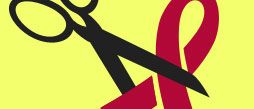
In November, poor funding resulted in the Global Fund's decision to cancel its 11th round of funding. The Global Fund is responsible for about 70% of HIV treatment in developing countries.
Earlier in the year, the Kaiser Family Foundation and UNAIDS released a report showing that funding fell from US$7.6 billion in 2009 to $6.9 billion in 2010 - the first time funding has dropped in more than a decade.
New Targets in Global AIDS Response
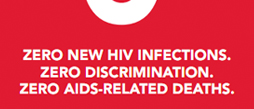 In June, at the UN High Level Meeting on AIDS, a new set of targets was outlined for the global AIDS response. Simply put: "Zero new infections, zero stigma and zero AIDS-related deaths". The meeting concluded with the adoption of a declaration that seeks, by 2015, to double the number of people on ARVs to 15 million, end mother-to-child transmission, halve TB-related deaths in people living with HIV, and increase preventive measures for the "most vulnerable populations".
In June, at the UN High Level Meeting on AIDS, a new set of targets was outlined for the global AIDS response. Simply put: "Zero new infections, zero stigma and zero AIDS-related deaths". The meeting concluded with the adoption of a declaration that seeks, by 2015, to double the number of people on ARVs to 15 million, end mother-to-child transmission, halve TB-related deaths in people living with HIV, and increase preventive measures for the "most vulnerable populations".
Crowdsourcing New HIV Strategy
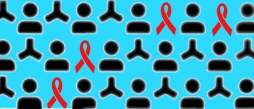
In September, UNAIDS, recognizing the important role of young people in the global AIDS response, launched a digital campaign aimed at encouraging young people to crowdsource a new strategy on HIV and Youth. The campaign, #CrowdOutAIDS, provides platforms for young people to interact and engage with each other regarding issues related to HIV in their community and seeks to reach a collective set of agreements out of these interactions.
More Political Misinformation
 In November, Leader of the Democratic Alliance in South Africa, Helen Zille, called for people who knowingly infected others with HIV to be charged with attempted murder, and quested why the government should pay for people who contracted HIV through "irresponsible behaviour".
In November, Leader of the Democratic Alliance in South Africa, Helen Zille, called for people who knowingly infected others with HIV to be charged with attempted murder, and quested why the government should pay for people who contracted HIV through "irresponsible behaviour".
On August 1st, Uganda's Minister of Health, Christine Ondoa, claimed she knew three people who had been cured of HIV through prayer.
New HIV Vaccine Approved for Trial
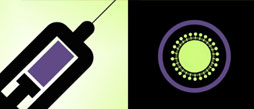
In December, the first and only preventative HIV vaccine based on a genetically modified killed whole virus has received approval by the FDA to start human clinical trials.
Developed at The University of Western Ontario, with the support of Sumagen Canada, the vaccine (SAV001) holds tremendous promise, stimulating strong immune responses in preliminary tests with no adverse effects or safety risks.
As we enter the 4th decade of HIV, there is no better time than now to celebrate success and renew our committment as responsible individuals, volunteers, activists, and sponsors. Reaching Zero New Infections is possible - and we hope it will be at the top of everyone's resolution list this year.
UNAIDS features collaborative Art for AIDS project
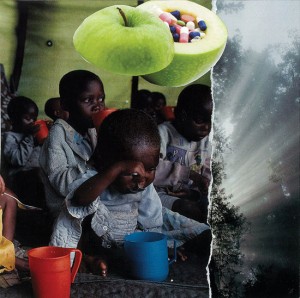 In September we told you about a collaborative pilot project between North Star Alliance, the World Food Programme, and of course, Art for AIDS, focused on extending our arts-based workshops model to truck drivers, sex workers, and students located in both Beit Bridge and Harare, Zimbabwe. While this was by no means our first student-workshop (check out our full list of workshop locations), it was the first time we had hosted workshops with truck drivers and sex workers, two populations that are particularly vulnerable to, and disproportionately affected by HIV, STIs, and other communicable diseases.
In September we told you about a collaborative pilot project between North Star Alliance, the World Food Programme, and of course, Art for AIDS, focused on extending our arts-based workshops model to truck drivers, sex workers, and students located in both Beit Bridge and Harare, Zimbabwe. While this was by no means our first student-workshop (check out our full list of workshop locations), it was the first time we had hosted workshops with truck drivers and sex workers, two populations that are particularly vulnerable to, and disproportionately affected by HIV, STIs, and other communicable diseases.
Following the workshops, all of us at Art for AIDS were excited by both the powerful artwork each participant produced, and by the high quality discussions about HIV that came out of the workshops. Over the past few months, we've been even more excited to watch public enthusiasm for this project grow.
Thanks to tremendous support from both North Star Alliance and the World Food Programme this project was featured with a large exhibition in September at the International Fund for Agricultural Development's (IFAD) Global Knowledge Share Fair, and at the World Food Programme's Head Quarters over World AIDS Day. The project has also been featured at exhibits in London and Toronto, Canada, and in Utrecht, the Netherlands.
This week, UNAIDS (the Joint United Nations Programme on HIV/AIDS) highlighted this initiative as well by posting a special photo gallery showcasing some of the works of art produced along with an explanation of the project. To view this gallery, please click the image below:
We would like to thank UNAIDS for highlighting this feature, and both North Star Alliance and the World Food Programme for the tremendous work they do, and the vision and support they've brought to this initiative.

About North Star Alliance
North Star Alliance is a not-for-profit public private partnership that provides healthcare and information to truck drivers, sex workers, and border communities through a network of roadside health clinics across Africa.
You can learn more about North Star by visiting them online or by joining them on Facebook.
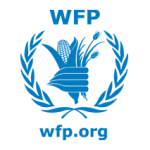
About The World Food Programme
WFP is the food aid arm of the United Nations system, and the largest humanitarian agency fighting hunger.
You can learn more about WFP by visiting them online or by joining them on Facebook.
What about HIV? [INFOGRAPHIC]

Thirty years into the response to HIV, an estimated 3000 young people are newly infected with HIV everyday. Many young people living with HIV still do not have access to treatment and only 34% of all young people have correct and comprehensive knowledge about HIV and how to protect themselves. That's why more than 150 young HIV activists from across the world gathered for a three-day summit in Bamako, Mali, last week to rally a youth-led response to HIV in lead up to the United Nations General Assembly High Level Meeting on AIDS (taking place in New York from 8 to 10 June 2011). Read more
Art for AIDS International exhibits at Stephen Lewis talk

Stephen Lewis spoke to a full ballroom at the London Hilton Hotel on Wednesday evening. Presented by the Monsignor Feeney Foundation, Lewis’s speech was focused on the Millennium goals, specifically global and local poverty and the position of women worldwide. Lewis spoke with ease and elegance and praised the work and mission of the Monsignor Feeney Foundation. Despite having to endure an increase in security at the door, those who attended the event were captivated by Lewis and welcomed him on stage with a standing ovation. The controversial lead up to Lewis’s visit had received much attention in local news; however, the controversy was forgettable as another standing ovation and prolonged applause concluded the evening.
Art for AIDS International was pleased to be the sole exhibitor at the event. Conveniently located adjacent to the bar, Art for AIDS International’s exhibit attracted an excess of observers, future partners and buyers. Volunteers Brittany Coulter, Jess McKeen and Kate Hoad-Reddick were on site to promote Art for AIDS International and help sell and package purchased pieces. Founder and Executive Director, Hendrikus Bervoets, was pleased with the attention Art for AIDS International received as well as the money garnered. 90% of Art for AIDS International’s proceeds go directly to grassroots projects that help women and children affected by AIDS in sub-Saharan Africa.
Art for AIDS International would like to thanks Stephen Lewis, the Monsignor Feeney Foundation, the London Hilton and all of the individuals who visited our exhibit and purchased a piece of art.
Art for AIDS International has a permanent gallery located at 242 Dundas St. in London. If you are interested in purchasing a piece of art, browsing the gallery or paying us a visit, please do not hesitate to come by.
2010 UNAIDS Report and the State of the HIV/AIDS Pandemic

Parts of this post originally appeared on Notes From the Field, a blog written by Art for AIDS International board member JP Bervoets.
This past week UNAIDS released the 2010 Report on the Global AIDS Epidemic. In it, UNAIDS highlights a number of key successes that seem to suggest that the HIV/AIDS pandemic has passed peak infection levels. One statistic in particular has been drawing considerable media attention: New infections have dropped by 20% globally.Read more
Twenty-two of the most affected countries in sub-Saharan Africa have reduced new HIV infections by more than 25%
 Over the last 25 or so years, many individuals working on the front lines in the fight against HIV and AIDS have had to become accustomed to accepting and celebrating the little victories. Barring a few notable exceptions where a given community or country has been able to legitimately curb and reduce the spread of HIV, many of us have excitedly relished in those moments when on an individual level, or in an individual case, a level of understanding, or the standard of living, of someone infected or affected by HIV/AIDS has improved. Recognizing that, in aggregate, these moments are a significant variable in an eventual end to the HIV/AIDS pandemic, has, however, been at times trying, especially in the face of the overwhelming AIDS statistics released annually. This is why many were ecstatic this week to learn that 22 of the worst affected countries in sub-Saharan Africa have reduced new HIV infections by over 25%.
Over the last 25 or so years, many individuals working on the front lines in the fight against HIV and AIDS have had to become accustomed to accepting and celebrating the little victories. Barring a few notable exceptions where a given community or country has been able to legitimately curb and reduce the spread of HIV, many of us have excitedly relished in those moments when on an individual level, or in an individual case, a level of understanding, or the standard of living, of someone infected or affected by HIV/AIDS has improved. Recognizing that, in aggregate, these moments are a significant variable in an eventual end to the HIV/AIDS pandemic, has, however, been at times trying, especially in the face of the overwhelming AIDS statistics released annually. This is why many were ecstatic this week to learn that 22 of the worst affected countries in sub-Saharan Africa have reduced new HIV infections by over 25%.
This new data was made available in a UNAIDS press release issued September 17th, just ahead of the upcoming United Nations Summit on the Millennium Development Goals. In it, UNAIDS Executive Secretary Michel Sidibe states that "for the first time change is happening at the heart of the epidemic. In places where HIV was stealing away dreams, we now have hope".
Read more
